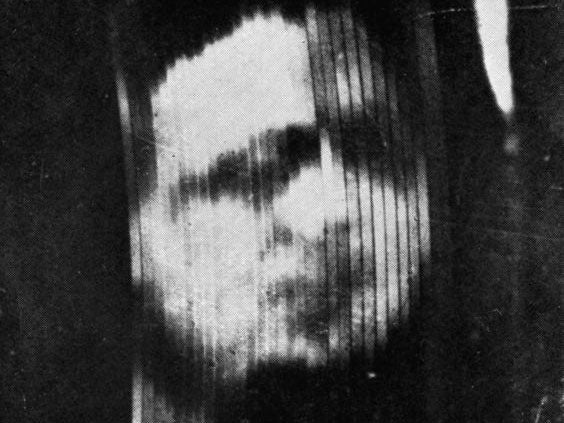See the first TV image from John Logie Baird's early 'Televisor' demonstrations
The first TV images were described by a journalist in 1926 as 'faint and often blurred'

Ninety years ago, in a small laboratory in Soho, Scottish inventor, John Logie Baird, revolutionised modern electronics by displaying the first television images to the public.
Far removed from the high definition images on our screens today, the small 3.5 by two inch pictures were described as “faint and often blurred” by a Times journalist who witnessed the historic moment, celebrated in today’s Google Doodle.
The image below, depicting Baird’s business partner, Oliver Hutchinson, was transmitted to members of the Royal Institution on 26 January 1926 through an apparatus he dubbed “the televisor”, able to transmit and instantly reproduce details of movement, such as that of the human face.
The “televisor” – a crude version of the modern telly resembling a radio – was a contraption of revolving discs with lenses around their edges able to break down light reflected by an object in front of it.
The reflections were then turned into flashes of electric code, which, when transmitted to a receiver, reconstructed an image of the original object.
Two years before, Baird transmitted flickering images across a distance of 10ft and the following year achieved TV pictures with light and shade.
It wasn’t until 1926, however, Baird’s “televisor” was able show moving images at a rate of 12.5 pictures per second and was the first demonstration of a television system able to broadcast with tone Graduation.
However, not everyone who witnessed the milestone in modern day electronics was convinced.
The Times journalist wrote of the invention: “It has yet to be seen to what extent further developments will carry Mr Baird’s system towards practical use.”
This wasn’t the only journalist unconvinced by Baird. While attempting to gain publicity for his invention the editor of the Daily Express was reportedly terrified of the influential inventor.
One staff member quoted him as saying: "For God's sake, go down to the reception and get rid of a lunatic who's down there.
"He says he's got a machine for seeing by wireless. Watch him - he may have a razor on him."
Following his demonstration in 1926, Baird developed colour TV and brought out the world's first mass produced television set in 1929.
Subscribe to Independent Premium to bookmark this article
Want to bookmark your favourite articles and stories to read or reference later? Start your Independent Premium subscription today.

Join our commenting forum
Join thought-provoking conversations, follow other Independent readers and see their replies